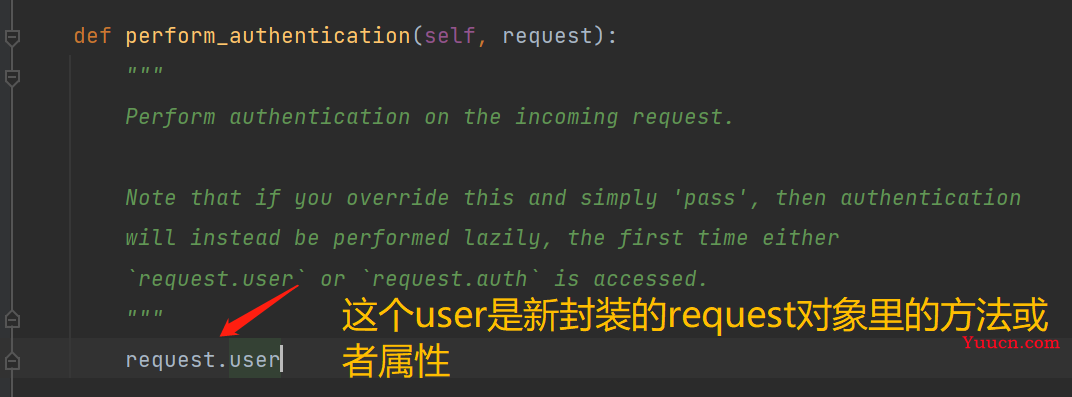认证源码分析
位置 :
APIVIew----》dispatch方法---》self.initial(request, *args, **kwargs)---->有认证,权限,频率三个版块
分析:
只读认证源码: self.perform_authentication(request)---》
self.perform_authentication(request)就一句话:request.user,需要去drf的Request对象中找user属性(方法)---》
Request类中的user方法,刚开始来,没有_user,走 self._authenticate()

核心:Request类的 _authenticate(self):
1.在需要进行认证的视图类中添加(认证类是自己写的类,该类继承了BaseAuthentication):

2.此时apiview里的 authentication_classes就变成了自己第一步在视图函数类里定义的了,而不会去自己的配置文件里找

3.然后正常执行到apiview里的dispatch方法:

4.dispatch方法内部又调用了initialize_request方法,返回了一个新的request对象

5.authenticators这个的值是get_authenticators()方法的返回值:返回值是一个个自己定义的继承了BaseAuthentication类的认证类对象

6.Request类中的authenticators变成了自定义类的对象

7.在继续走apiview里的dispatch方法里的initial方法

8.进入认证模块的方法

9.进入新封装request对象里


10.核心_authenticate方法
def _authenticate(self):
# self是Request对象,所以去Request对象里找authenticators,
# 最后self.authenticators的结果就是一个列表,列表里面是一个个自定义认证类的对象
for authenticator in self.authenticators:
try:
# 此时authenticator就是认证类的对象,对象调用了authenticate方法,这个方法是需要我们在认证类里重新写的
# 这个方法有两个返回值
user_auth_tuple = authenticator.authenticate(self)
except exceptions.APIException:
self._not_authenticated()
raise
if user_auth_tuple is not None:
self._authenticator = authenticator
# 这两个返回值给了Request对象,就是request.user和request.auth(这就是为什么要求自己重新写的authenticate方法要有两个返回值了)
self.user, self.auth = user_auth_tuple
return
self._not_authenticated()